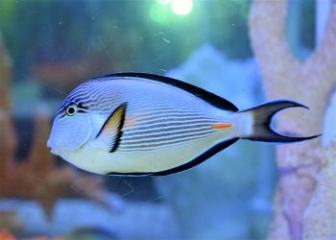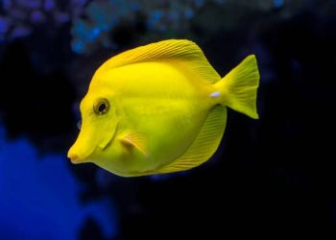Saddleback Clownfish - A - Z Breeding Guide
Blog | by
Saddleback Clownfish, a marine aquarium fish with characteristic black and white striped colors, gentle temperament, easy to adapt, easy to raise, and hermaphrodite reproduction.
Saddleback Clownfish , one of the clownfish lines with special colors with a harmonious combination of two contrasting black and white tones, friendly temperament, easy to adapt, easy to raise, very popular in saltwater aquariums.
In today's article, let's learn more about the clown fish with beautiful aquarium fish to understand the characteristics, habits as well as how to care for and raise this nice fish!
Information about clown fish :
| Scientific name | Amphiprion polymnus |
| Common name | Saddleback Clownfish |
| Class | Actinopterygii - Ray-finned fishes |
| Set | Blenniiformes |
| Surname | Pomacentridae - Damselfish |
| Spend | Amphiprion - Clownfish |
| Species | A. polymnus |
| Source | Western Pacific |
| Size | 10 - 13 cm |
| Lifespan | 5 - 7 years |
Origin of clown fish

The clown fish, a type of clown fish with impressive colors.
Black Saddleback Clownfish, scientific name Amphiprion polymnus, is a marine fish belonging to the Pomacentridae family, originating from the western Pacific Ocean, specifically as follows:
- Vietnam
- China
- Philippines
- Malaysia
- Singapore
- Ryukyu Islands of Japan.
- Solomon Islands of Australia.
They like to live in muddy fish lagoons, sheltered bays or shallow sea areas with depths of 2 - 30 meters, where there are few corals and many types of sea anemones such as Heteractis crispa, Stichodactyla haddoni,...
Nowadays, thanks to its unique appearance and good adaptability, clown fish are very popular in the aquarium world.
Appearance of clown fish
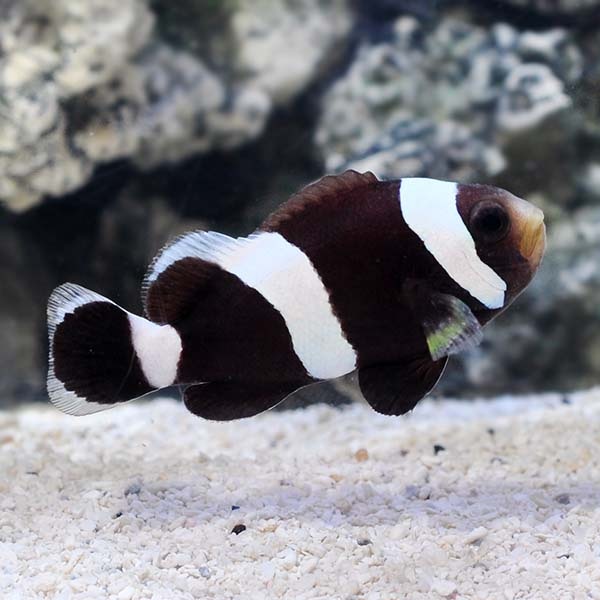
The special appearance of a clown fish.
The clownfish is one of the most impressive and recognizable clownfish species, specifically as follows:
- Size : Adult fish are 10 - 13 cm long, larger than many other clownfish.
- Body shape : The fish's body is oval, slightly flattened in width, generally similar to other clownfish species.
- Body color : The whole body of the fish is dark black or dark brown, with two or three prominent white stripes, one stripe near the back of the eye, one stripe right in the middle of the body (behind the pectoral fin), the last stripe near the caudal peduncle.
- Saddle Mark : Characterized by a wide white stripe shaped like a saddle, this is a characteristic of this fish species, hence the name "Saddleback"
- Caudal fin : Black, with white border
- Eyes : Round, shiny black, located near the first white stripe.
- Muzzle : Orange or light brown in color.
Clownfish behavior
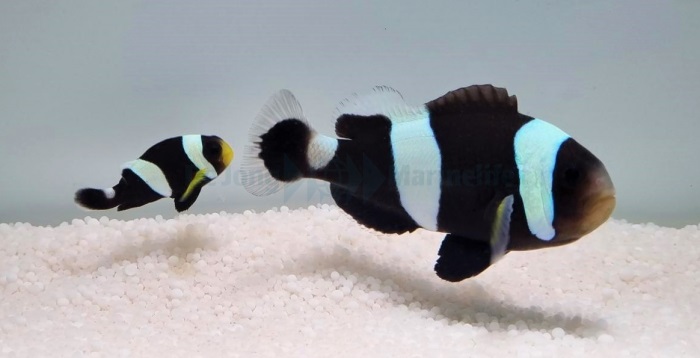
Clownfish can live in groups.
Black Saddleback Clownfish ( Amphiprion polymnus ) has very interesting habits and social behavior, let's learn more details below!
Highly territorial
Clownfish are very territorial, especially in adulthood, when they have found their own "nest" of anemones, they will tend to protect their territory, even chasing and threatening other fish that want to come near their "home".
Living in pairs or small groups
In nature, clownfish like to live in pairs or small groups, usually 3-5 fish. In the group, there is a clear hierarchy, the largest fish is the female leader, the smaller fish is the male that reproduces.
Symbiotic relationship with sea anemone
The clownfish has a close symbiotic relationship with sea anemones such as Stichodactyla haddoni, Heteractis crispa, or Macrodactyla doreensis. They protect the anemones from natural predators and in return, the anemones provide both a "nest" and food for them, which is an interesting relationship in nature.
Reproduction by sequential hermaphroditism
The clown fish has a hermaphrodite reproductive behavior, specifically as follows:
- All clownfish are born male, but as they mature, in a group or pair, the largest male will spontaneously change sex to female.
- Before spawning, the female fish "seduces" the male fish by shaking her body slightly and swimming close to the male fish to attract it.
- Males clean hard surfaces near the anemone such as rocks, shells, dead corals to make nests.
- Female fish can lay from 300 - 1000 eggs at a time.
- After laying eggs, the male fish will take on the task of guarding, protecting and fanning the water to provide oxygen to the eggs.
- Eggs will hatch in 6 - 10 days, depending on water temperature.
- After hatching, the fry will float in the water for 7-12 days like plankton, then gradually move to the bottom to find their own sea anemone "nest".
Detailed guide to raising clown fish for beginners

A school of clownfish is resting on a uniquely shaped rock.
Below is a super detailed guide to raising clown fish for beginners, including preparing the tank, water source for feeding, and health care. Please read it now if you want to try your hand at this fish.
Prepare the tank to raise clown fish
The first step in raising clown fish is to prepare a suitable aquarium, specifically as follows:
- Minimum capacity : 100 liters if raising 1 - 2 fish, ideal from 150 - 200 liters if raising a small group.
- Water filtration system : Choose a strong filter such as overflow filter, waterfall filter or external filter.
- Skimmer system : Necessary to filter protein, excess organic matter in the tank to keep the water clean and stable.
- Wave hair machine or gentle vortex pump : Creates a gentle flow, providing dissolved oxygen for fish to grow.
- LED lighting system : Use specialized type for marine fish with blue or white light
- Aquarium decoration : Choose live rock as the base, creating shelter for fish and microorganisms, choose coral gravel or clean sea sand as the tank substrate. Can also raise sea anemones or soft corals.
- Microbial initiation : Run the filter and create flow for 3 - 4 weeks before releasing fish into the tank.
Suitable water parameters for raising clown fish
For clown fish to grow healthily in an artificial tank, your water quality must meet the following basic parameters:
- Temperature : 25 - 28 degrees Celsius, stable.
- Salinity : 1.020 - 1.026 SG (Equivalent to 28 - 35 ppt).
- pH : 8.1 - 8.4
- Ammonia, Nitrite : Best always at 0 ppm.
- Calcium : 400 - 450 ppm, if raising sea anemones or corals,
- Magnesium : 1250 - 1350 ppm
- Alkalinity (KH) : 7 - 11 dKH, helps stabilize pH and is necessary for coral and sea anemone growth
What do clown fish eat?
In the natural environment, clownfish like to eat algae, zooplankton, organic debris or food from sea anemones. In general, they are omnivorous, so in an artificial aquarium environment, you can feed this fish the following foods:
- Specialized pellet food : Type specifically for marine fish, omnivorous.
- Shrimp : Brawns, and squid, minced.
- Frozen food : Artemia, mysis, bloodworms,...
- Seaweed : Can be chosen in dry or tablet form.
Note, you should only feed fish 1-2 times/day with just enough food to avoid waste and water pollution.
What fish should and should not be kept with clown fish?
Clownfish are naturally docile, so you can keep them with the following fish:
- Threadfin fish: Yellow threadfin , Dory ,...
- Emperor fish
- Goby
- Dwarf Angelfish
Avoid keeping clown fish with aggressive fish such as:
- Lionfish
- Ray
- Trigger fish
Prevention and treatment of diseases for clown fish
To help your clown fish stay healthy and avoid minor illnesses, you should pay attention to preventing and taking care of their health, specifically as follows:
Disease prevention measures :
- Quarantine new fish for at least 2 weeks before introducing them into the community tank.
- Avoid sudden changes in environment, especially temperature, salinity, pH.
- Maintain clean water, provide enough dissolved oxygen.
- Add vitamins, garlic and probiotics to food periodically to increase fish resistance.
- Observe fish for unusual signs and symptoms every day.
Common diseases in clown fish :
| Disease name | Symptom | Treatment |
| Mushroom |
Fish have white cotton-like mold on the body, fins, scales, gills,... Fish stop eating, lethargic, discolored |
Isolate sick fish Bathe fish with methylene blue at the recommended dosage. Change water, ensure water quality in the tank. |
| Scaly, bloated |
Abnormally swollen fish belly Pine cone-shaped scales Fish are lethargic, stop eating, and like to lie on the bottom. |
Stop feeding the fish for 2 - 3 days to observe. Use digestive aid and antiparasitic drugs. Add garlic to fish food |
| Skin parasites |
Skinny fish despite adequate feeding. Fish are itchy and rub themselves against rocks and corals in the tank. |
Isolate sick fish. Bathe fish in fresh water for 2 - 5 minutes and use parasitic medicine. If you see parasites on your skin, use tweezers to remove them. Change water, clean tank. |
How much is the clown fish?
Currently, the price of clown fish in the Vietnamese market fluctuates depending on origin, size, and place of sale, usually ranging from 100,000 - 300,000 VND/fish.
This price will change depending on the time, so to know the most accurate price, you should contact some online aquarium stores to ask for the most accurate price.
Beautiful clown fish pictures
Finally, to fully admire the lovely, cute beauty of the clown fish, please take a look at the image collection that we share below!
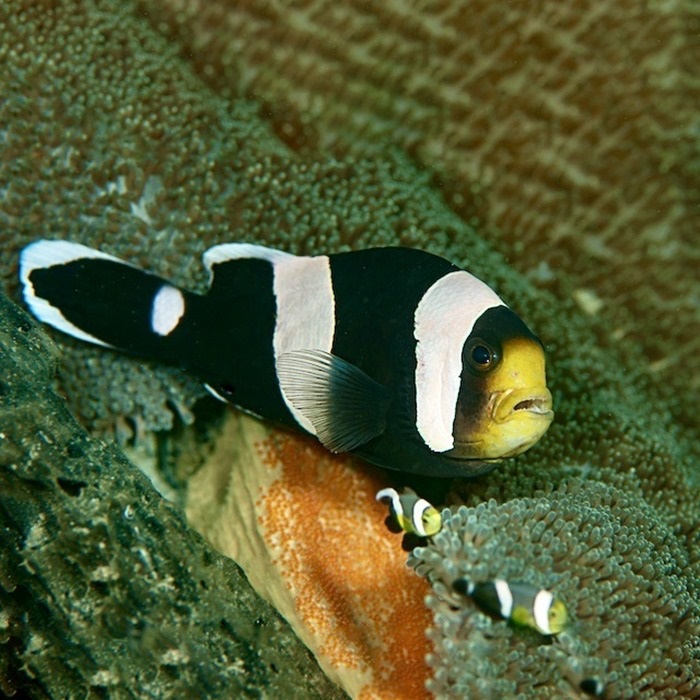
Mother and baby clown fish.

Close-up of the face of a clown fish.

Two clown fish are swimming close to the bottom of the tank.

The clown fish is hiding among the coral reef.
Hopefully, with the information that nicefish.net shares in the above article, it will help you better understand the clown fish . If you are looking for a small, lovely fish with unique colors for your saltwater aquarium, the clown fish is a good choice. They are not only easy to care for but also affordable.
Goodbye and see you soon in the next articles of the Blog section to learn more about many other interesting marine and freshwater aquarium fish!
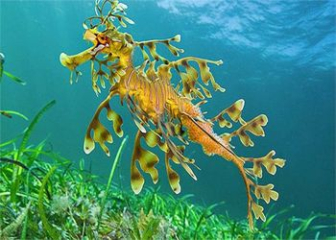
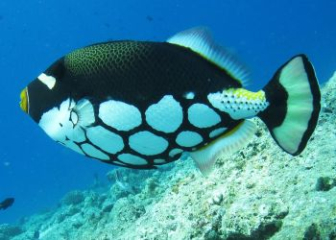
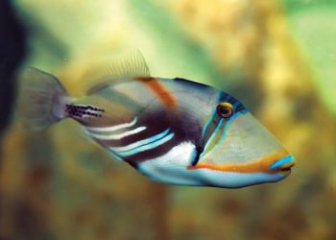
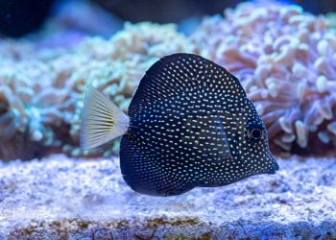
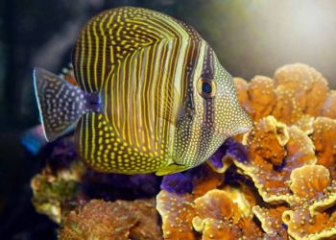
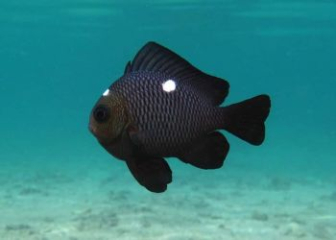
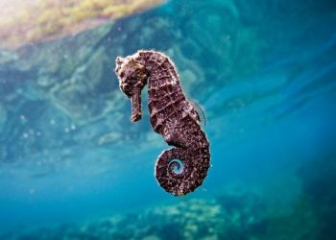





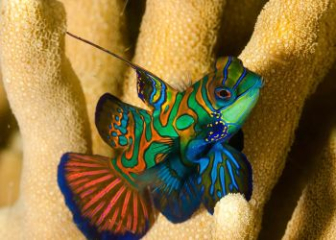

_350x250.jpg)


